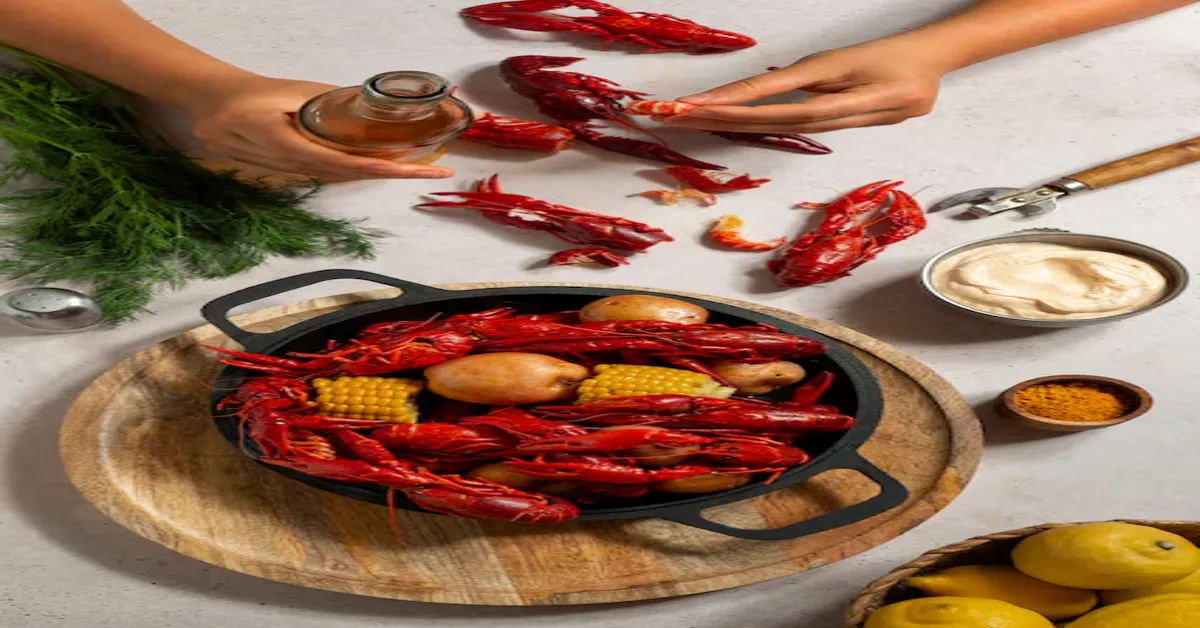Snow crab legs are a seafood lover’s dream come true, boasting sweet, succulent meat that tantalizes the taste buds. Whether you’re hosting an elegant dinner party or enjoying a cozy night in, these delectable crustaceans add a touch of luxury to any meal. With their impressive size and delicate flavor, snow crab legs offer an unforgettable dining experience that’s hard to resist.
Imagine cracking open the shells and discovering tender morsels waiting inside—each bite bursting with ocean-fresh goodness. Preparing them at home can be easier than you might think! From where to buy the freshest crabs to mastering cooking techniques and pairing them with delightful side dishes, this guide covers everything you need for a memorable feast. Dive into the world of snow crab legs and elevate your next culinary adventure!
Where to Buy Crab Legs
Finding high-quality crab legs is crucial for a satisfying meal. Local seafood markets are often the best places to start. They usually source fresh, sustainable options and can provide expert advice on selecting the perfect snow crab legs for your needs.
If you prefer shopping from home, online retailers have made it easier than ever to get fresh seafood delivered right to your doorstep. Look for reputable companies that specialize in seafood, ensuring their products are frozen quickly after being caught. Check customer reviews and ratings before making a purchase.
Don’t overlook grocery stores either—many carry frozen or fresh snow crab legs in the freezer section or at the seafood counter. Just be sure to inspect them carefully; freshness is key when choosing this delicious delicacy!
How to Cook Crab Legs
Cooking crab legs is easier than you might think. You can choose from several methods, including boiling, steaming, or baking. Each method brings out the sweet flavor of snow crab legs beautifully.
For boiling, fill a large pot with water and bring it to a rolling boil. Add some salt for taste. Once boiling, carefully place the crab legs in and cook for about 5-7 minutes until heated through.
If you prefer steaming, set up a steamer basket over simmering water and cover it tightly. Let the legs steam for approximately 6-8 minutes for that tender texture everyone loves. Baking them wrapped in foil at 350°F works wonders too—just take around 15 minutes to warm them perfectly!
READ MORE:Celebrate with 1942 Tequila: Flavor, Cocktails, & Pairings
How Long to Cook Crab Legs
Cooking snow crab legs is all about timing. Whether you’re boiling, steaming, or baking them, the key is to avoid overcooking. Typically, they need only about 4 to 7 minutes in boiling water. If you’re opting for steaming, allow around 6 to 8 minutes for perfect tenderness.
For those using an oven method, preheat it to 375°F and bake the legs wrapped in foil for approximately 15-20 minutes. The goal is simple: you want that succulent meat heated through without losing its sweet flavor or texture.
Always keep an eye on your crab legs while cooking. They’ll turn a vibrant orange-red when done—an unmistakable sign of readiness! Enjoying perfectly cooked snow crab legs means savoring every juicy bite at their best.
How to Eat Crab Legs
Eating crab legs can be an enjoyable experience when you know the right techniques. Start by placing the leg on a stable surface. Use your hands to bend the shell gently until it cracks, exposing the tender meat inside. A crab cracker or seafood fork can help if needed.
Once you’ve broken open the shell, use your fingers or tools to pull out the succulent meat. Be sure to savor every bite! It’s often sweet and flaky, offering a delightful texture that pairs beautifully with dipping sauces like melted butter or garlic mayo.
Don’t forget about those tiny bits of meat hidden in joints and claws. They might require some extra effort but are well worth it for their flavor. Remember to have napkins handy; eating snow crab legs can get a little messy but adds to the fun of this culinary adventure!
How to Reheat Crab Legs
Reheating crab legs is straightforward, allowing you to enjoy their delicious flavor again. First, preheat your oven to 350°F (175°C). Place the crab legs on a baking sheet and cover them with aluminum foil. This will help retain moisture as they heat.
Alternatively, you can use the stovetop for a quicker method. Fill a pot with water and bring it to a boil. Once boiling, reduce the heat and add the crab legs for about five minutes. This steam will rehydrate them nicely without compromising taste.
For those in a hurry, microwaving works too—just use low power settings and cover the crab legs with damp paper towels to prevent drying out. Heat in short intervals until warm throughout, taking care not to overdo it! Enjoy your tender snow crab legs once more!
How To Prepare Snow Crab Clusters
Preparing snow crab clusters is simple and rewarding. Start by thawing the frozen clusters in the refrigerator for several hours or overnight. If you’re short on time, you can run cold water over them to expedite the process. Be sure they are completely defrosted before cooking.
Once thawed, rinse the crab legs under cool running water to remove any ice crystals or debris. Use kitchen scissors to cut through the shell at strategic points—this allows for easier access to that sweet meat once cooked.
Next, it’s time to choose your cooking method! You can steam, boil, or bake them based on your preference. Whichever way you go, just ensure they’re heated thoroughly and ready for dipping into melted butter or a zesty sauce of your choice!
Additional Details on Snow Crab Clusters
Snow crab clusters are a true delight for seafood enthusiasts. These clusters consist of multiple legs and claws, making them perfect for sharing or enjoying solo. The sweet, tender meat is not only flavorful but also packed with nutrients like protein and omega-3 fatty acids.
When shopping for snow crab clusters, freshness matters. Look for bright shells with a rich color and avoid any that smell overly fishy. Freshly caught crabs have a subtle ocean scent that indicates quality. You can find these delicacies at local seafood markets or online retailers specializing in fresh seafood delivery.
Preparation is straightforward; just ensure you thaw them properly if frozen before cooking. Whether you’re steaming, boiling, or grilling them, you’ll be rewarded with an exceptional dining experience full of delicious flavors waiting to be discovered within each cluster.
Snow Crab Leg Meat Options
Snow crab leg meat is celebrated for its sweet, delicate flavor and tender texture. When it comes to enjoying this seafood delight, you have a few options that elevate your dining experience. The meat can be served cold in salads or as part of a seafood platter, allowing the natural flavors to shine.
Alternatively, consider using snow crab meat in warm dishes like creamy pasta or rich risottos. The subtle sweetness pairs beautifully with garlic butter sauces and fresh herbs. You can also incorporate it into tacos or quesadillas for a unique twist.
If you’re looking for convenience, pre-cooked and frozen snow crab legs are readily available at many grocery stores. This makes preparation easy while still delivering on taste. Whether enjoyed simply steamed or incorporated into elaborate dishes, snow crab leg meat is versatile enough to please any palate.
Cooking Tips and Techniques
Cooking snow crab legs can be a delightful experience if you follow some simple tips. Start by choosing high-quality, fresh crab legs. If frozen, ensure they’re properly thawed before cooking to maintain the best texture and flavor.
Steaming is one of the most effective methods for cooking snow crab legs. Use a large pot with a steaming basket or insert; this allows steam to circulate evenly. Add water and seasonings like lemon slices or herbs to infuse additional flavors as they cook.
If you’re looking for added richness, consider brushing melted butter over them after cooking. A squeeze of fresh lemon juice will brighten up the dish beautifully and enhance the natural sweetness of the meat. Experiment with dips, such as garlic butter or cocktail sauce, to elevate your dining experience even further!
READ MORE:Weller Bourbon 2023: Rising Star in the World of Whiskey
Side Dishes to Pair with Snow Crab Legs
Pairing the right side dishes with snow crab legs can elevate your dining experience. Consider serving buttery garlic bread to soak up any delicious juices or a fresh garden salad for a crisp contrast.
Corn on the cob is another great option, bringing sweetness that complements the savory crab meat perfectly. Roasted asparagus or steamed broccoli adds both color and nutrition to your plate.
For something heartier, creamy mashed potatoes work well alongside snow crab legs, providing a comforting base for your meal. You might also enjoy rice pilaf flavored with herbs; its lightness enhances rather than competes with the main dish.
Don’t forget about dipping sauces! A tangy cocktail sauce or melted drawn butter are classic choices that add extra flavor dimensions. A squeeze of lemon over everything brightens up the entire meal.
With these sides in mind, you’re set for an unforgettable seafood feast centered around those delightful snow crab legs. Enjoy every bite and savor the flavors!









